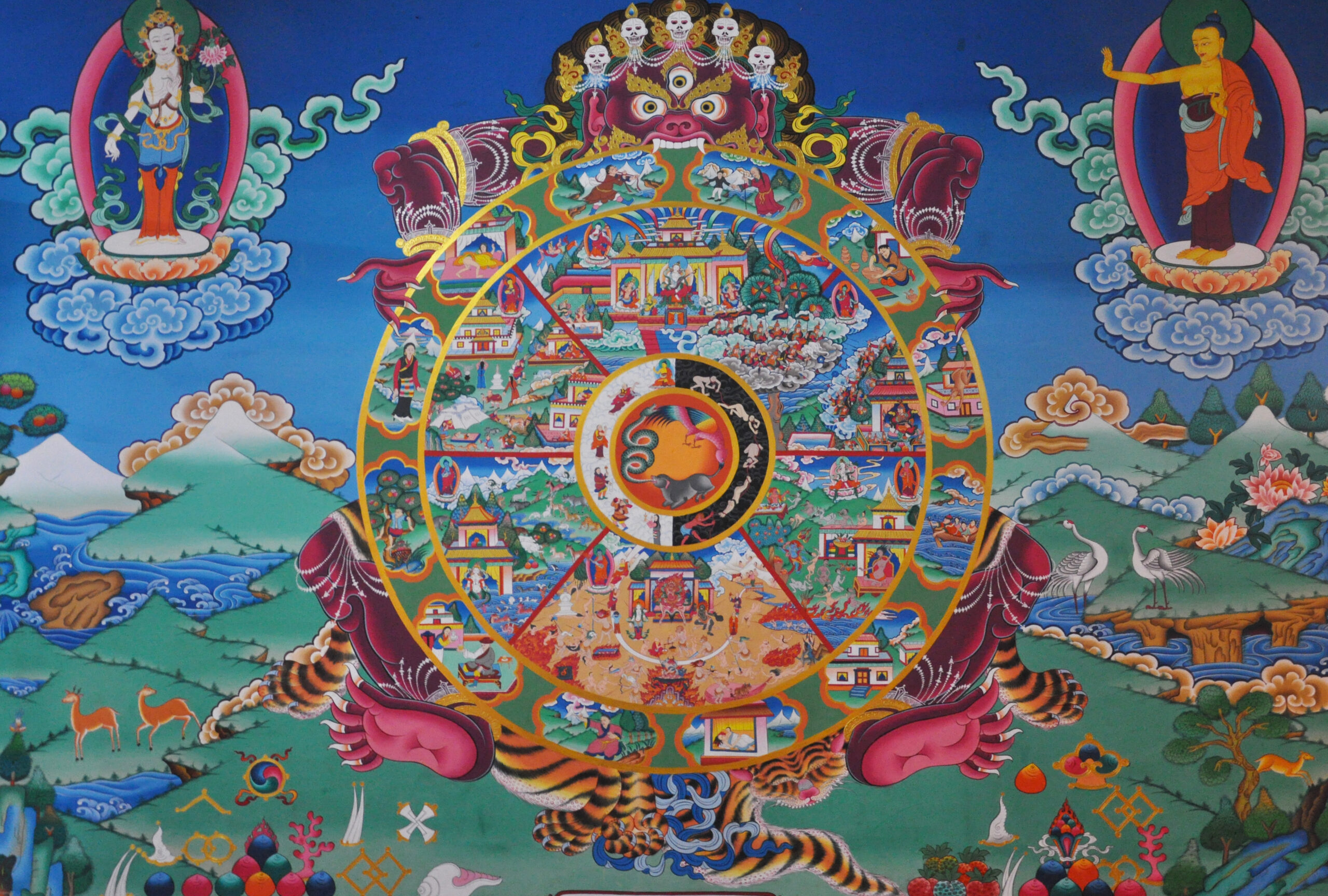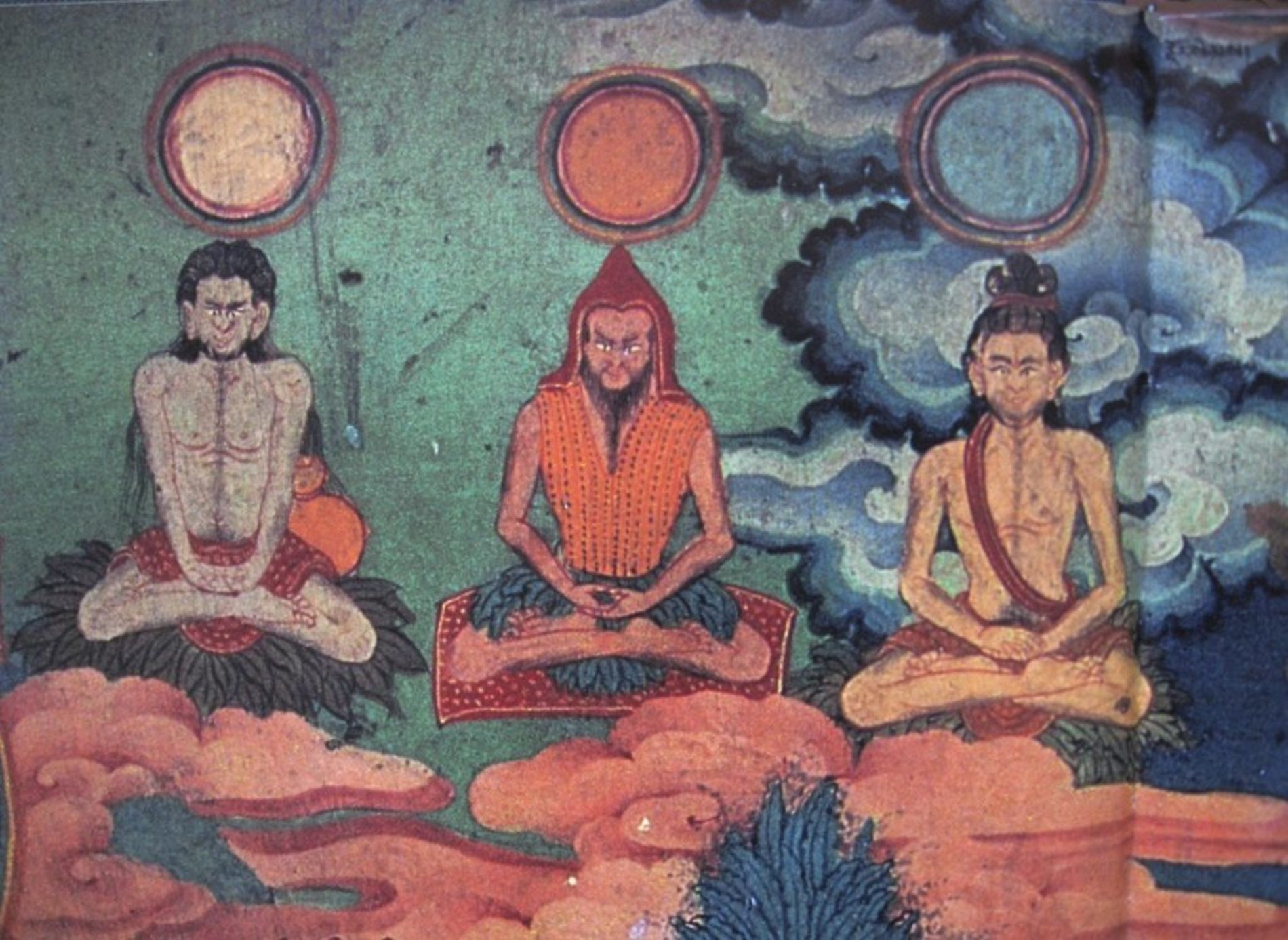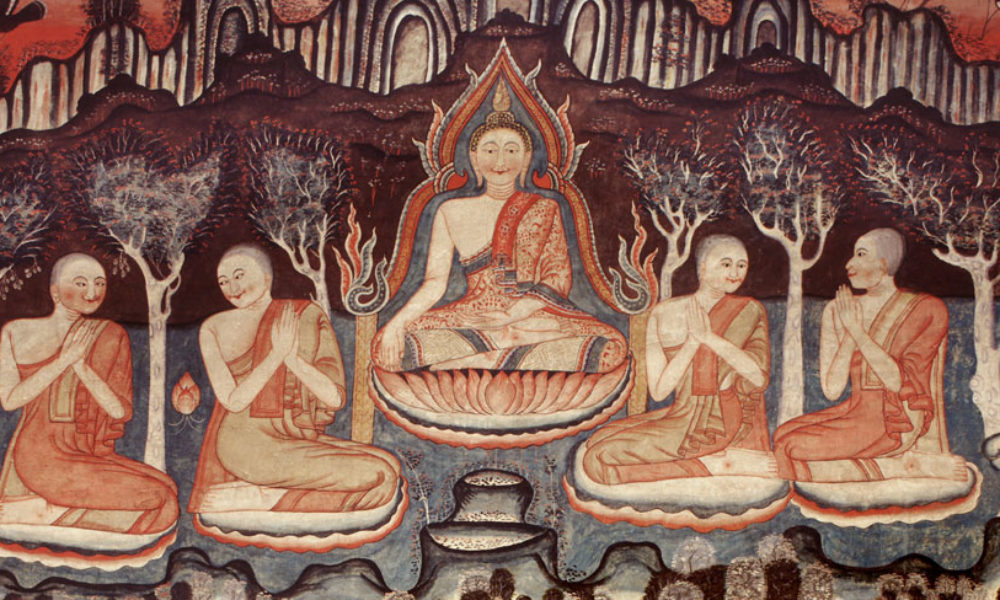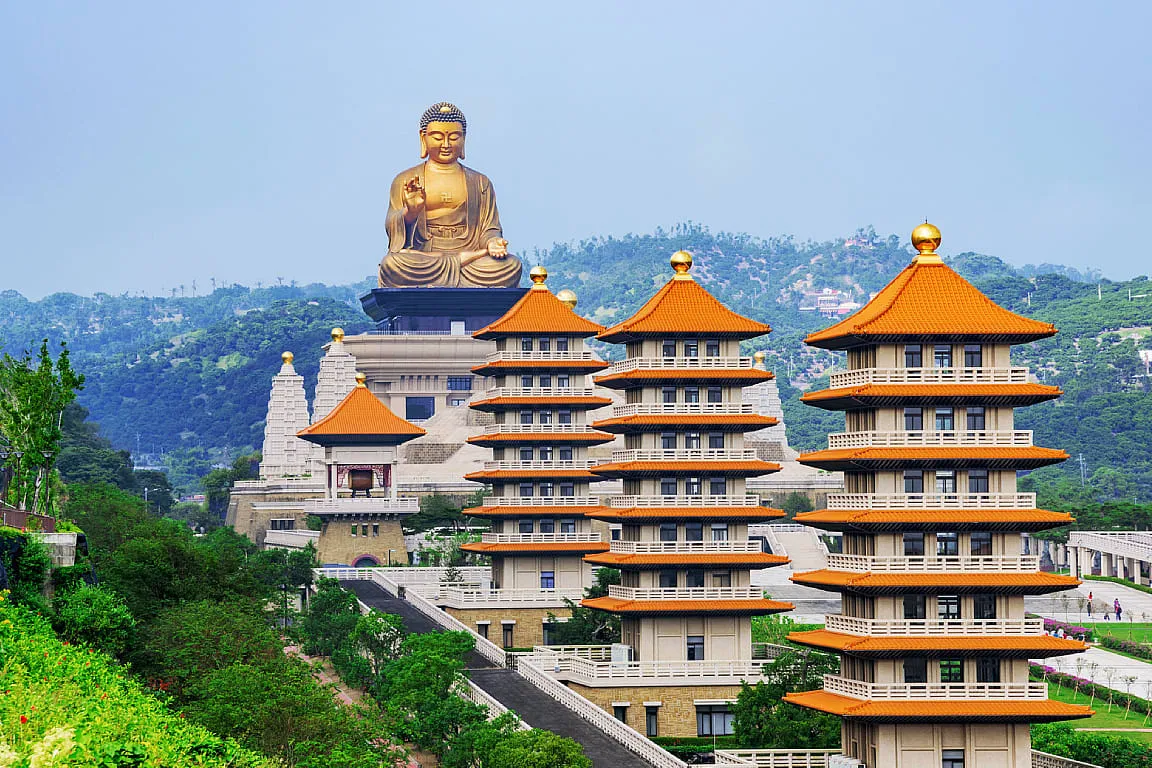The Wheel of Life is a mandala—a complex picture representing the Buddhist view of the universe.
To Buddhists, existence is a cycle of life, death, rebirth, and suffering from which they seek complete liberation.
The six major sections represent the Six Realms, each depicting different states of existence. In each realm, Bodhisattva Avalokiteshvara appears to guide beings towards liberation, but true liberation is attainable only in the human realm. Those who achieve enlightenment can then transcend the cycle of rebirth.
Yama – Protector of the Dharma
Yama, the wrathful dharmapala, is a deity in Buddhist and Hindu traditions, often depicted as the god of death and the lord of the underworld. In Buddhist cosmology, Yama serves as a guardian figure, responsible for judging the souls of the deceased and determining their fate in the afterlife based on their karma, or actions, during their lifetime.
As a dharmapala, or “protector of the dharma,” Yama is depicted in a fierce, wrathful form, symbolizing his power to overcome obstacles and protect the Buddhist teachings. Despite his fearsome appearance, Yama’s role is ultimately compassionate, as his judgments aim to guide beings towards spiritual growth and liberation from the cycle of suffering.
In Tibetan Buddhism, Yama is often associated with the Wheel of Life, where he holds the wheel symbolizing the cycle of existence and the realms of rebirth. His presence in this context serves as a reminder of the impermanence of life and the importance of ethical conduct and spiritual practice in shaping one’s destiny.
The Six Realms
The Six Realms, depicted on the Wheel of Dharma or the Wheel of Life (Samsara), are the various states of existence in Buddhist cosmology. Each realm represents a different level of experience and is characterized by specific mental states and karmic conditions.
These realms are depicted in the Wheel of Life to illustrate the cycle of samsara, the continual process of birth, death, and rebirth governed by karma. The teachings emphasize the impermanence and unsatisfactory nature of existence in these realms and aim to guide practitioners towards liberation from the cycle of suffering.
The Six Realms are:
- Gods Realm (Deva-gati): This realm is inhabited by gods or celestial beings who enjoy immense pleasure and luxury. However, their existence is marked by delusion and ignorance, as they are unaware of the impermanence and suffering inherent in life.
- Asuras Realm (Asura-gati): Asuras are often depicted as demigods or anti-gods, characterized by jealousy, rivalry, and aggression. They constantly strive to surpass the gods and are engaged in perpetual conflict and warfare.
- Human Realm (Manushya-gati): The human realm is considered to offer the optimal conditions for spiritual progress. Beings in this realm experience a balance of pleasure and pain, allowing for self-awareness, moral choices, and the pursuit of enlightenment.
- Animal Realm (Tiryagyoni-gati): Beings in the animal realm are driven by instinct and lack self-awareness. They experience suffering primarily through the struggles for survival and the cycle of predator-prey relationships.
- Hungry Ghost Realm (Preta-gati): Hungry ghosts are depicted as beings with insatiable hunger and thirst, yet they are unable to satisfy their desires due to their narrow throats and large stomachs. They experience constant craving and torment.
- Hell Realm (Naraka-gati): The hell realm is characterized by intense suffering, torture, and torment. Beings in this realm experience the consequences of negative actions and karmic debts, enduring unimaginable pain for extended periods.
Center of the Wheel of Life
At the center of the Wheel of Life are the forces that perpetuate the cycle of suffering—greed (cock), anger (snake), and ignorance (pig).
These forces, known as the Three Poisons, represent ego’s fundamental attitudes: attachment, aversion, and indifference, which drive unwholesome states of mind.
Passion (attachment, greed, lust): Driven by desire for pleasure and self-preservation, passion offers a path to enlightenment through love and connection.
Aggression (aversion, anger, hatred): Rooted in fear and self-defense, aggression causes immense suffering and is seen as wisdom when devoid of self-interest.
Ignorance (indifference): Characterized by apathy towards others’ suffering, ignorance hinders enlightenment and perpetuates ego-centric behavior.
Significance
The Wheel of Life was created as a visual representation of Buddhist cosmology and the fundamental teachings on the nature of existence and the cycle of samsara. Its creation serves several purposes within Buddhist tradition:
- Teaching Tool: The Wheel of Life serves as a didactic tool to convey the core principles of Buddhist philosophy and cosmology. Through its imagery and symbolism, it illustrates fundamental concepts such as the Four Noble Truths, the Twelve Links of Dependent Origination, and the Six Realms of Existence.
- Symbol of Impermanence: The wheel’s circular design symbolizes the cyclical nature of existence, emphasizing the impermanence of all phenomena. It depicts the continual process of birth, death, and rebirth, highlighting the transient and fleeting nature of worldly existence.
- Reflection on Karma: The Wheel of Life illustrates the concept of karma, or the law of cause and effect, which governs the cycle of samsara. The imagery of the wheel portrays how actions lead to specific consequences and how beings are bound to the cycle of existence by their past actions.
- Contemplative Practice: Contemplating the Wheel of Life encourages practitioners to reflect on their own existence and the nature of suffering. By meditating on the imagery and symbolism of the wheel, individuals deepen their understanding of Buddhist teachings and cultivate wisdom and compassion.
- Motivation for Liberation: The wheel serves as a reminder of the unsatisfactory nature of worldly existence and the suffering inherent in samsara. By understanding the causes of suffering depicted in the wheel, practitioners are motivated to seek liberation from the cycle of birth and death and attain enlightenment.




